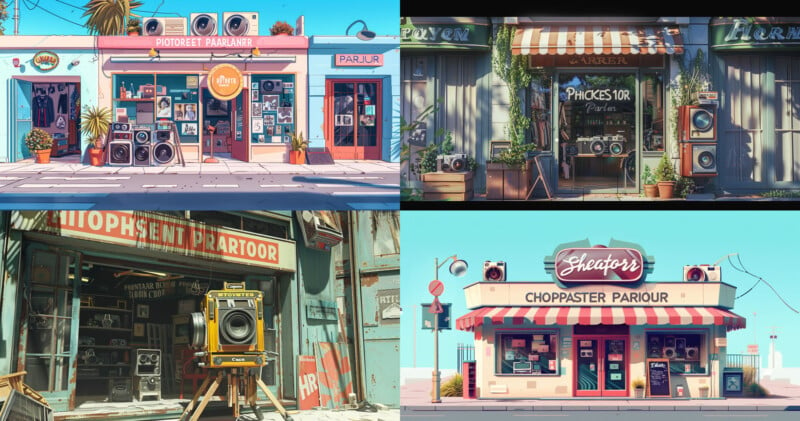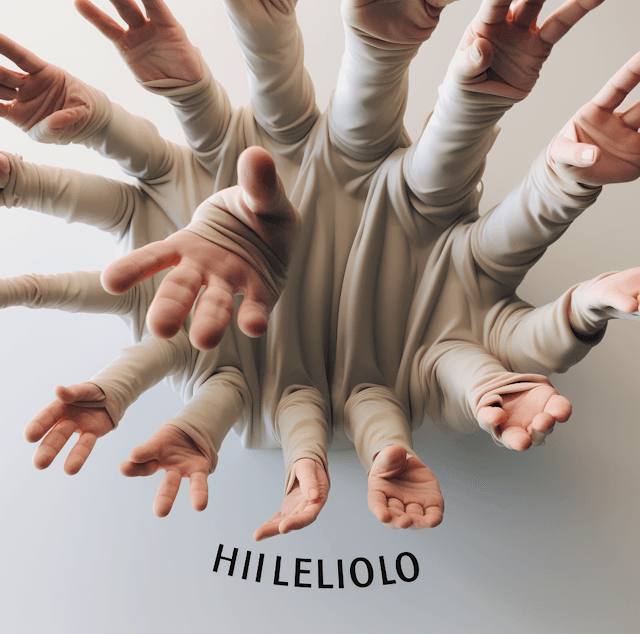Have you ever tried creating an image using AI, only to be baffled by the nonsensical text it produced? You’re not alone.
It’s frustrating, right? You might wonder why these powerful tools, which can create stunning visuals, often fail miserably when it comes to generating coherent text within images. Understanding this oddity is not just fascinating but also crucial if you’re using AI for creative projects or business purposes.
This article will dive deep into why AI image generation struggles with text, unraveling the mysteries behind this technological hiccup. Keep reading to discover how this flaw impacts you and your creations, and how it might evolve in the future.
Challenges In Text Rendering
Have you ever tried using AI image generation tools to create an image with text, only to be met with hilarious or perplexing results? You’re not alone. AI’s struggle with rendering text can be traced back to several fundamental challenges that it faces.
Complexity Of Written Language
Written language is a maze of rules and exceptions. AI models often falter because they lack the intuitive grasp of language that humans possess. Consider how many different ways you can write a single sentence; AI struggles to account for all these variations.
Text involves syntax, semantics, and even cultural nuances. These elements are hard for AI to predict accurately. You might wonder how AI can be so good at generating images but struggle with simple text. The answer lies in the layers of complexity that written language presents.
Contextual Understanding Limitations
AI lacks deep contextual understanding. You might enter text into an AI generator expecting it to understand context, but it often misses the mark. AI focuses on patterns, but text requires a comprehension of context to be accurate.
Imagine asking AI to generate an image with a quote. The AI might produce garbled text that doesn’t match the intended message. This disconnect arises because AI models don’t truly “understand” the context like you do.
Font And Style Variability
Fonts and styles add another layer of difficulty. AI struggles with the diversity of fonts and styles that humans seamlessly navigate. Think about the endless font choices available for just one phrase. AI finds it challenging to render text that aligns with specific font or style preferences.
Why does AI generate text in images that look like a toddler’s scribbles? It’s because fonts can vary in thickness, slant, and spacing, making them complex for AI to render accurately. This variability adds a twist to the tale of AI’s text generation journey.
These challenges in text rendering highlight the gap between AI’s capabilities and human nuance. How do you feel about the potential for AI to overcome these hurdles? Could enhancing AI’s understanding of language be the key to improving text generation? Share your thoughts below!

Credit: petapixel.com
Technical Constraints
AI image generation is revolutionizing the creative landscape, offering impressive visuals with just a few clicks. However, when it comes to text, the results often leave much to be desired. The technical constraints behind these shortcomings reveal why AI struggles with producing coherent and accurate text within images. Let’s dive into the specifics.
Model Training Limitations
AI models are trained on vast amounts of data. Yet, their focus is usually on recognizing and replicating visual patterns rather than understanding language intricacies. This means while they excel at creating stunning visuals, they falter at generating legible text.
Think about it—have you ever tried reading an AI-generated poster only to find gibberish instead of a catchy slogan? The root of this issue lies in the model’s lack of linguistic training.
AI models prioritize visual elements, leaving language nuances neglected. Thus, the text produced is often a random assortment of letters rather than coherent words.
Data Set Shortcomings
The datasets used for training AI models are crucial. They shape the model’s ability to generate accurate images. However, when datasets lack diverse examples of text, AI struggles to replicate them correctly.
Imagine flipping through an art book with only half the pages showcasing text. Would you expect to suddenly master typography? It’s similar with AI models—they need diverse and abundant textual examples to generate text effectively.
Without rich datasets that include varied text, AI is left shooting in the dark, often missing the mark entirely.
Resolution And Clarity Issues
Text within images requires high resolution and clarity to be legible. AI’s focus on generating visually appealing content can sometimes compromise these aspects.
Ever seen an AI-created image where the background is breathtaking but the text is a blurry mess? This happens because AI prioritizes overall image aesthetics over text clarity.
Would you prefer a gorgeous image with unreadable text or a simple design with clear messaging? It’s a balance AI hasn’t quite mastered yet.
So, what can you do to navigate this challenge? Understanding these technical constraints is the first step. By recognizing the limitations, you can better tailor your expectations and explore alternative solutions for your text-based needs. Could there be creative ways to complement AI-generated visuals with human expertise? The possibilities are worth exploring.
Comparative Analysis
AI image generation has made significant strides in recent years. Yet, generating text within images remains a challenge. Understanding the contrast between image and text generation can shed light on this issue. This analysis explores the intricacies of both processes and their pitfalls.
Text Vs. Image Generation
Image generation focuses on creating visual content. AI models excel in producing realistic images. Text generation, on the other hand, involves language processing. This requires understanding grammar and context. Combining both demands more advanced algorithms.
The core difference lies in complexity. Image generation deals with patterns and shapes. Text requires meaning and coherence. This disparity makes text generation within images more difficult. AI struggles to balance these elements effectively.
Human Perception Of Errors
Humans easily spot text errors in images. Misspelled words or jumbled letters stand out. These mistakes break immersion and seem unnatural. Our brains are wired to detect language inconsistencies quickly.
On the other hand, minor image flaws often go unnoticed. Slight color or shape variations blend in. This selective perception makes text errors more glaring. AI-generated text must meet higher standards to satisfy human expectations.
Success Stories In Image Generation
Despite challenges, AI has achieved success in generating images. Models can create stunning landscapes and portraits. These accomplishments highlight AI’s potential in visual arts. They demonstrate significant progress in image synthesis.
Some AI systems have also managed to generate text. Though imperfect, they show promise for future advancements. These successes inspire further research into integrating text within images. The journey continues as technology evolves.
Advancements And Innovations
AI image generation struggles with text due to complex language rules and varying fonts. Understanding context and grammar is challenging for AI. Often, it creates random letters instead of meaningful words.
In recent years, AI image generation has made significant strides, yet it continues to struggle with rendering accurate text. This challenge has sparked numerous advancements and innovations aimed at bridging this gap. Let’s dive into how improved algorithms, the role of machine learning, and future prospects are shaping the landscape of AI image generation.Improved Algorithms
AI developers constantly refine algorithms to enhance text generation capabilities. These improved algorithms focus on better understanding the context and structure of language.For instance, AI systems are learning to differentiate between similar-looking letters, reducing errors in text output. This means you might see fewer instances of garbled or nonsensical words in AI-generated images.However, it’s still an ongoing process, and there’s plenty of room for growth. Have you ever tried using AI to generate an image with text and noticed the odd results? This is where these advancements aim to make a difference.Role Of Machine Learning
Machine learning plays a crucial role in teaching AI systems to generate text more effectively. By analyzing vast amounts of data, AI models learn to predict text placement and structure.Consider how you learned to read and write. It took practice and exposure to different styles and fonts. AI models undergo a similar learning curve, continuously improving their text generation skills.Yet, the journey is far from over. How can AI systems better mimic human-like text generation? The solution lies in ongoing training and data refinement.Future Prospects
The future of AI image generation holds promising potential for accurate text rendering. Developers are exploring new techniques, such as integrating natural language processing with image generation.Imagine a future where AI effortlessly generates images with perfectly rendered text, enhancing creative projects and digital communications. This could revolutionize how you interact with technology in your daily life.But what challenges lie ahead? It’s crucial to consider ethical implications and the fine-tuning required to achieve this vision.You play a role in shaping this future by providing feedback and staying informed about these advancements. Are you ready to witness AI’s text generation capabilities improve and transform the digital landscape?Applications And Impacts
AI image generation has made huge strides in recent years. Despite this progress, it struggles with generating accurate text. This limitation affects its use in many areas. Let’s explore the applications and impacts of AI image generation in different fields.
Graphic Design
In graphic design, AI helps create stunning visuals. Designers can use it to quickly produce eye-catching images. But text generation remains a challenge. AI often produces text that is hard to read or nonsensical. This limits its utility in creating logos or advertisements. Accurate text is crucial for branding and communication. Designers need reliable tools that can handle both images and text well.
Entertainment Industry
The entertainment industry uses AI for creating digital content. Artists employ it for concept art and animations. AI can produce vivid scenes. Yet, text generation often falls short. It can result in confusing subtitles or on-screen text. This affects storytelling and viewer experience. Precise text is vital for clarity in scripts and dialogue. The industry needs tools that improve text generation.
Educational Tools
AI has potential in educational tools. It can create engaging visuals for learning materials. Students benefit from interactive content. But text generation issues can lead to misunderstandings. Incorrect text can confuse learners or misrepresent facts. Reliable text is essential for accurate information. Educators require tools that ensure both visual appeal and textual accuracy.

Credit: www.reddit.com

Credit: www.technologyreview.com
Frequently Asked Questions
Why Is An Ai Image So Bad With Text?
AI struggles with text in images due to complex character recognition. Models focus more on visuals than textual details. Text often appears distorted or unclear, impacting readability. AI advancements continue to improve this issue, but limitations remain.
Why Does Generative Ai Struggle With Text?
Generative AI struggles with text due to context understanding limitations. It sometimes misinterprets nuances, sarcasm, or idiomatic expressions. AI relies on patterns rather than genuine comprehension, causing inconsistencies. Complex language structures and evolving human communication further challenge AI’s ability to generate coherent text.
Why Can’t Ai Images Get Text Right?
AI struggles with text due to complex font recognition and context understanding. It focuses more on images than text details. Text within images often appears distorted or inaccurate because AI lacks perfect language comprehension and context awareness. Improving algorithms can enhance this, but challenges remain.
Why Is Dall’e So Bad At Text?
DALL-E struggles with text due to its training focus on images, not language. It lacks the nuanced understanding needed for accurate text generation. This limitation arises from its architecture, which prioritizes visual elements over textual clarity, making text generation challenging.
Conclusion
AI image generation struggles with text. Its limitations are clear. Misinterpretation of letters often occurs. This creates confusing outputs. AI models primarily focus on visuals. Text comprehension is secondary. As technology advances, improvements are likely. Developers work hard to enhance accuracy.
Understanding these challenges is crucial. It helps set realistic expectations. Patience remains key as technology evolves. Many advancements are on the horizon. Future tools promise better results. For now, awareness is essential. It bridges the gap between expectation and reality.
AI will continue to improve. With time, text generation will become more reliable.
